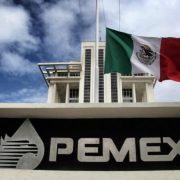Offshore Project Development: The Road to First Oil
As new offshore operators continue to settle into their awarded blocks and develop them into a stable production phase as quickly as possible, new models of collaboration between the public and private sectors must arise in view of the new administration’s focus on PEMEX, panelists at the Mexico Oil & Gas Summit 2019, said on Wednesday July 17 in Mexico City.
Private operators and service providers are ready to comply with government plans: Graciela Alvarez Hoth, panel moderator
According to Graciela Álvarez Hoth, CEO of NRGI Broker, both private operators and Mexican service providers are ready to collaborate with the government’s plans to strengthen the NOC while also building upon the many successes achieved in a short period of time within the fields awarded through the bidding rounds. “The number of new discoveries highlights the need for exploration activities to capitalize on the available opportunities in the country,” she said.
Álvarez Hoth made her remarks on the first day of the two-day summit held at the Sheraton Maria Isabel Hotel as part of her introductory remarks to the panel she moderated, entitled “Offshore Project Development: The Road to First Oil.”
Four panelists from key public and private institutions provided a crucial mix of perspectives on Mexico’s offshore development, particularly in terms of achieving production in new shallow water fields.
“Talos Energy wants to have a positive impact in Mexico. The president has set his production goal and our goal is to do our part to help. ”
Francisco Noyola, Country Manager of Mexico for Talos Energy, was the first to provide the necessary background with a chronology of Talos’ success with its Zama discoveries, of which the latest appraisal well, Zama-3, was completed this past June.
He highlighted the historical breakthroughs made by Talos in the Mexican context, which have included the most core samples extracted (over 440m) and the first block unification agreement with PEMEX in Mexico’s history.
The historical dimension of these milestones promoted a transparent relationship with regulators and authorities that he believes plays a key role in their current and future success. “Talos wants to have a positive impact in Mexico. The president has set his production goal and we aim to do our part to help,” Noyola said.
“The success of MARINSA as a driller is to be committed to the objective of increasing production to contribute significantly to what Pemex and the Government of Mexico have established”
The panel then progressed toward the perspective of another private player whose successes have also been quite public as of late: Marinsa, represented by Chief Strategy Officer Sergio Suarez. After detailing the ways in which the crisis period during 2016 and 2017 prepared them for the road ahead, Suárez said that “The development of Marinsa has been the strengthened result of a set of readjustments to meet the needs of the national market and hill mentioning that Mexico has “qualified, strong Mexican suppliers and “under the conditions established by the current administration, being a national player gives us a competitive advantage. However, we also have strong alliances with international companies. ”
The CNH has had to experience “logarithmic learning” in order to perform its functions as a regulator, now it could reach response times for approvals as low as 34 days on average
Fausto Álvarez Hernández, Head of the Exploration and Production Compliance Unit at CNH, provided a direct public sector assessment of the success factors for offshore projects looking for a quick launch procedure.
He noted that CNH has had to experience “logarithmic learning” in order to perform its duties as a regulator as effectively as possible. He also praised the efficient path forward forged by ENI, Hokchi and Fieldwood toward first oil and eventual full production, which might total up to 220Mb/d from all three. “Optimization has been a key priority for CNH, particularly in approvals, as well as simplification in the documentation needed to present a project,” he said.
He also made a point of specifying that CNH now could reach turnaround times for approvals as low as 34 days on average, which he considers an extremely important component of fast offshore development.
Transparency and a long-term vision are key to sustainable social development projects. Enviromental Resources Management (ERM)
The fourth and final participant in the panel was Alberto Sambartolomé, Senior Partner at ERM, which has participated significantly in the sustainability assessments of many of Mexico’s offshore production projects. He highlighted the chief importance of efficiently introducing new operators to the legal and social expectations of the Mexican environment.
This not only leads to reduced downtime for drilling and development through quick regulatory compliance, but it also ensures the longevity of production once first oil is reached.
Projects that engage with regulators and communities early and promptly can look forward to productivity uninterrupted by protests or shutdowns, he said. “Transparency and a long-term vision are key for sustainable social development projects.”
Our country has a historic opportunity to demonstrate the competitiveness of the sector and recover its place in the world as an oil country without losing its vision of social development and environmental responsibility, thus concluded Graciela Alvarez Hoth this applauded panel.







